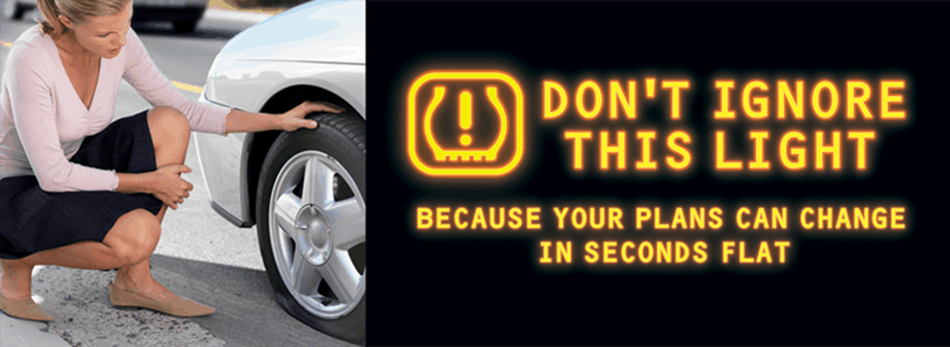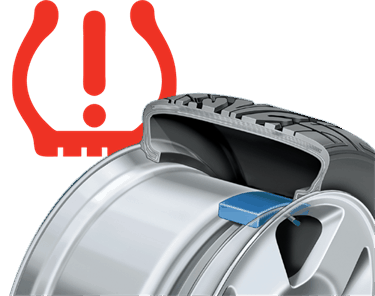TPMS Introduction

42% of Drivers Can't Identify the TPMS Symbol
In a recent study, 4 out of 10 drivers could not identify the Tire Pressure Monitoring System (TPMS) warning light, even though 96% of drivers considered under-inflated tires an important safety concern and 89% believed that properly inflated tires and a warning system could save their lives.
This is your TPMS warning light. When illuminated, it indicates the tire pressure monitoring system has found a tire with low air pressure, a sensor with a dead battery or a TPMS system malfunction.
The Tire Pressure Monitoring System is a safety device that measures, identifies and warns you when one or more of your tires are significantly under-inflated. The TPMS light on your dash will flash if there is a system malfunction. A steady illuminated light indicates an air pressure problem.
If the TPMS light is illuminated, the first thing to do is to check your tire pressure. If driving, pull over safely at the first opportunity. Once you determine you are not having a blowout, check the pressure in each tire with a tire gauge. If the problem is low tire pressure, fill your tires to the recommended pressure noted on your placard.
Once the issue is corrected, most vehicles will reset the TPMS light automatically. Some will require a manual reset, and some may require professional attention (refer to the owner’s manual). If your TPMS light is still illuminated after correcting the air pressure or you notice any tire damage, see a professional technician immediately.
Some vehicles may feature a different TPMS display. Regardless of the type of TPMS alert in your vehicle, if it’s illuminated, your vehicle is trying to tell you something. One or more of your tires is under-inflated, or the TPMS system itself is malfunctioning and needs immediate attention from you or your service professional.
Ignore TPMS at Your Own Risk

Ignoring your TPMS Light Can Lead To:
- Poor fuel efficiency
- Compromised vehicle handling
- Increased risk of hydroplaning
- Diminished braking performance
- Shorter tire life
Did You Know?
- 35% of drivers admit to never checking tire pressure.
- There’s a flat tire for every 46,000 miles driven.
- Three out of four roadside flats are preceded by a slow leak or under-inflation.
- Low tire pressure is responsible for nearly ¼ million accidents annually.
- An SUV owner can save up to $600 a year just by keeping the tires properly inflated.
- Under-inflated tires waste 2.8 billion gallons of gas annually in the US at a cost of $11.2 billion.
- NHTSA estimates that TPMS could save as many as 660 lives annually.
- It is a violation of federal law to render a TPMS system inoperative.
- The TPMS sensor is typically located as a valve-mounted stem in the tire. There are also band-mounted sensors that are attached to the wheels themselves.
- TPMS sensors can fail due to road hazard damage, over-tightening, using an improper valve core, electronic failure or sensor battery discharge.
- Virtually every original sensor will need to be replaced.
- The TPMS warning light illuminates when one or more tires become 25% under-inflated. This can lead to decreased vehicle handling, risk of hydroplaning, diminished braking performance, uneven tire wear and shortened tire life.
- The TPMS warning light will illuminate if there is a problem. A professional technician can test TPMS sensor operation.
Why Is TPMS So Important?
Ask Your Technician to Check Your TPMS Every Time Your Tires Are Serviced
When it’s time to replace your TPMS sensors, you don't need to go back to the dealer. Ask your trusted service technician for Standard® and Standard Import OE-Matching TPMS sensors or QWIK-SENSOR Programmable TPMS Sensors.
Our advanced engineering ensures that our OE-match sensors match the fit, form and function of the vehicle’s original sensor. Our OE-match sensors are designed to operate within extremely tight radio frequency (RF), eliminating most external interference for more accurate tire monitoring.

